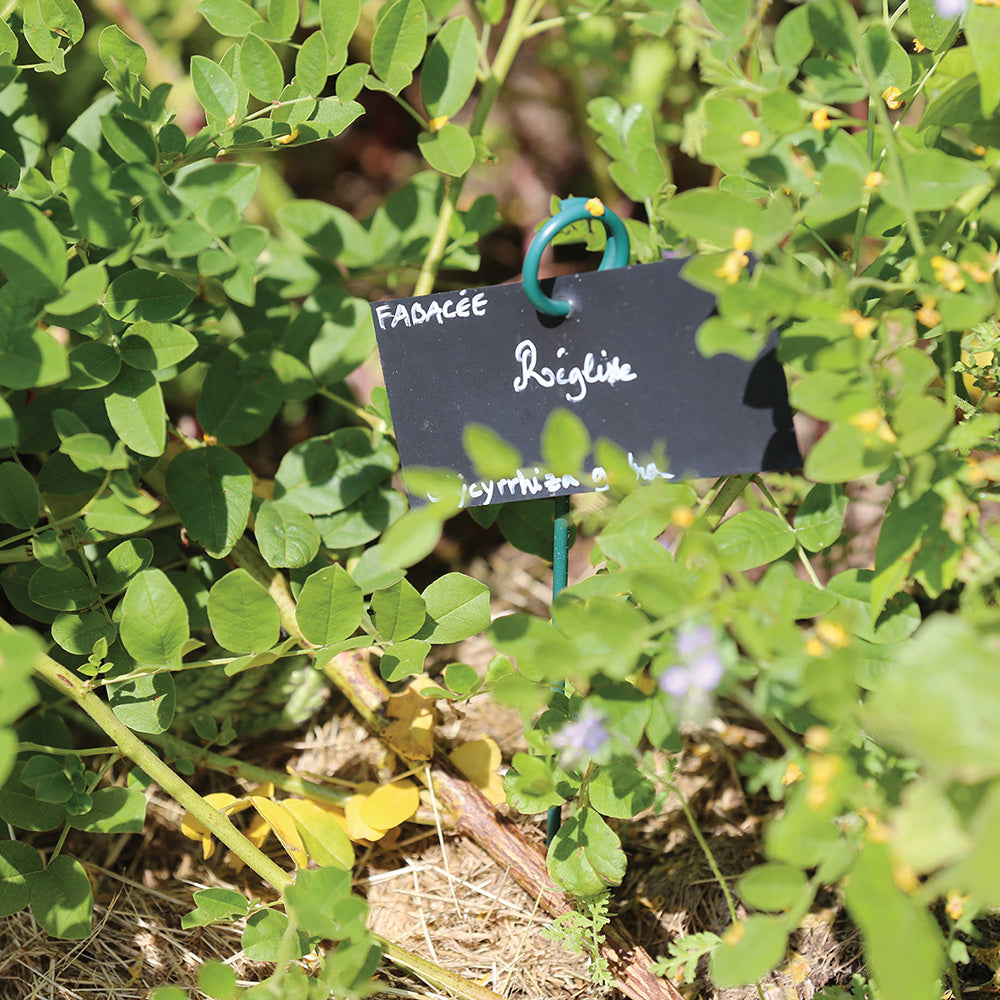LICORICE NT
Glycyrrhiza glabra
Licorice , native to the Mediterranean , is a bushy perennial that takes its Latin name Glycyrrhiza glabra from two Greek words: Glucus (meaning Sweet ) and Riza (meaning Root ). Found naturally in Sicily and Spain , it has been cultivated in France for many years, mainly in Indre-et-Loire . Its creeping roots, brown on the outside and yellow on the inside, have a sweet taste and can reach between 1 and 2 m long.
Bloom
Flowering , from June to August , reveals small purple and pale blue flowers. The pods produced by the plant contain between 3 and 4 brown seeds .
This hardy plant is easy to grow. It is frost-tolerant, however, it requires deep, rich, loose soil so that the roots can spread. It is important to enrich the soil because licorice requires a lot of nutrients .
Sowing
Sowing is done in March and June on well-prepared soil in 1.20m wide beds, preferably under a frame to save time. Liquorice appreciates rich , moist soils as well as warm climates .
Harvest
Harvesting takes place at the end of the third year, from July to September . By this time, the roots have acquired the desired qualities. The roots are pulled up in the fall , when the leaves fall. Care must be taken not to break the roots, which are long and thick and of the best quality.
Licorice is also known for its medicinal properties, as it helps relieve inflammation of the digestive and respiratory systems. It is also known for its laxative properties.
How to successfully sow licorice
Licorice is sown in March and June in well - prepared soil in 1.20m wide beds, preferably under a frame to save time.
Licorice will appreciate rich , moist soils as well as warm climates .
Licorice Harvest
Harvesting takes place at the end of the third year, from July to September , when the plant is well established and the foliage has turned yellow. It will produce secondary plants from which the roots will be harvested.
We recommend that you do not touch the mother plant .
Care must be taken not to break the roots, which are long and thick and of the best quality. Wash the roots and let them dry before eating.









